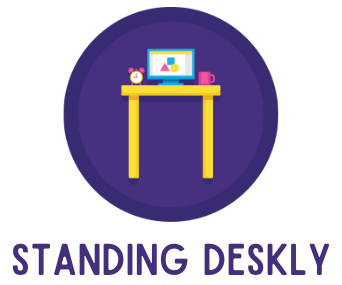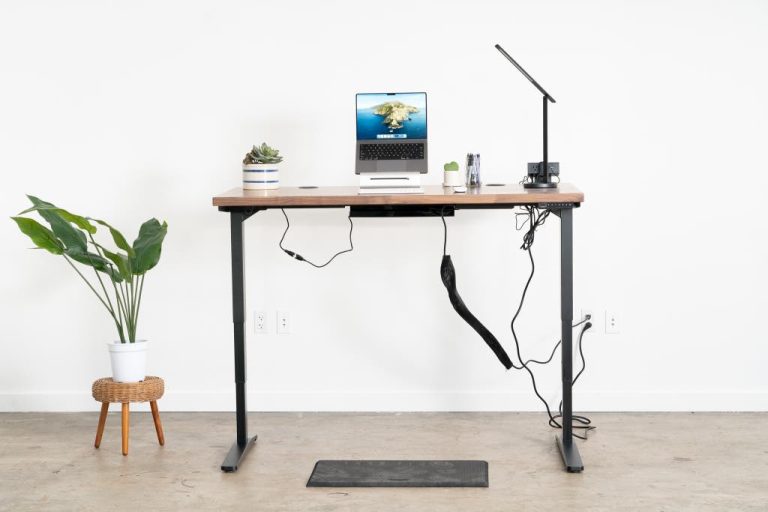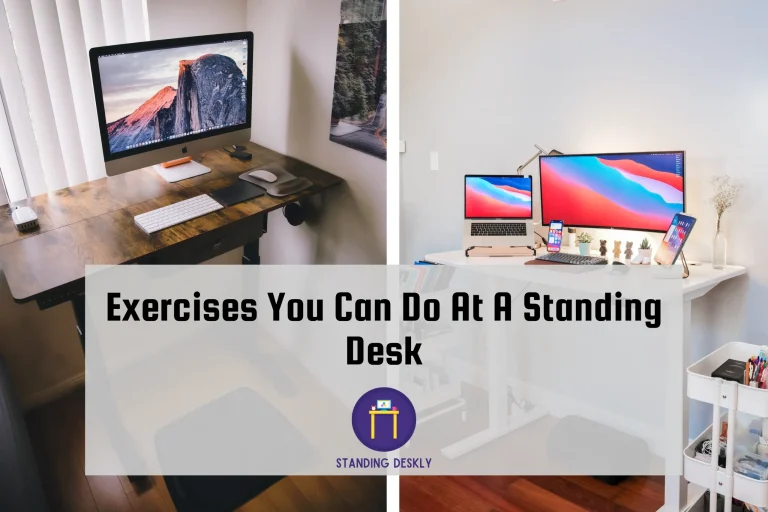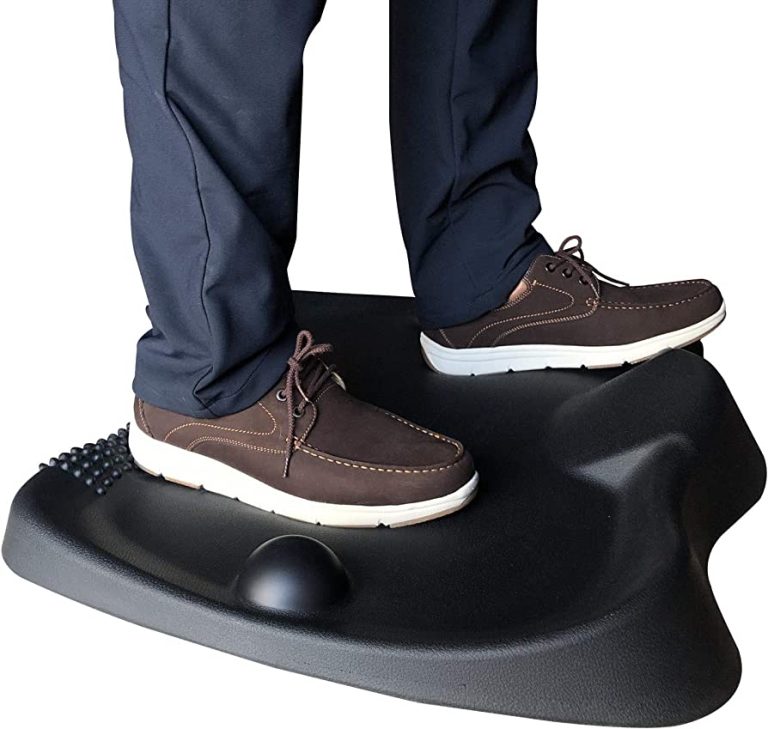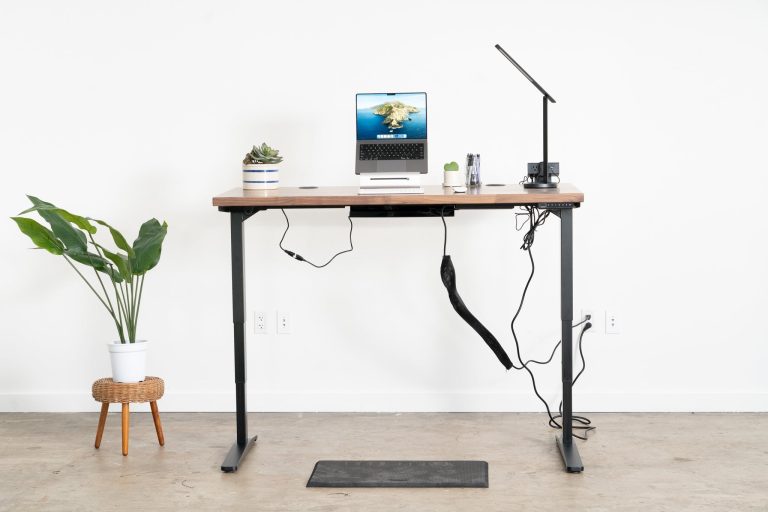How Long Does It Take To Get Used To Standing Desks?
If you’re looking to adjust to a standing desk, it may take a little while for your body to get used to the new routine. It can take up to two weeks for your muscles to adjust and get used to standing all day. During this time, it’s important not to rush things and allow your body plenty of time to adjust.
If you find that you’re experiencing any discomfort or pain, be sure to take some time off and allow your muscles a chance to rest. Remember that it’s important to gradually increase the amount of time you spend standing each day over the course of a few weeks, rather than jumping straight from sitting all day to standing all day. By following these tips, you should be able to get used to standing desks relatively quickly.
To learn more about the process of getting used to standing desks and what challenges you may face along the way, keep reading.
Challenges of Standing Desks
Standing desks can be intimidating and uncomfortable for those who are just getting started. Even people who have used the computer for a long time may find the new position confusing and frustrating at first.
People who use standing desks often feel pain in their lower back, neck, or shoulders, especially when they first start using them.
When you lean on your desk or grip the mouse too tightly, you can also hurt your wrists and forearms.
For the most comfort, you should stand with your spine in its natural position. This means that your head, shoulders, hips, knees, and ankles should all be in the right place. A common mistake is hunching your shoulders forward or arching your lower back; both of these will cause strain over time, so it’s best to make sure that you stay aware of your posture throughout the day. When using a standing desk, it’s also important to move around often to improve circulation and ease muscle tension. Taking frequent breaks can also help relieve fatigue from standing for long periods of time.
Adjusting to Standing Desks: Things You Should Do
Adjusting to standing desks can be difficult for those who are used to sitting all day. You may find yourself feeling stiff and sore after standing for a long period of time, and it may take some time to get used to the new position.
To make the transition easier, start by standing in short bursts throughout the day instead of trying to do it all at once. This can help your body adjust more quickly and reduce any initial discomfort.
When you first begin using a standing desk, it’s important to pay attention to your posture. Make sure your back is straight and your feet are flat on the ground.
You should also try different heights until you find the one that feels most comfortable for you. Also, think about adding an anti-fatigue mat or other supportive foot padding to help ease any pain or stiffness in your legs or feet while you stand.
You might also experience some mental adjustments when transitioning from sitting to standing desks. Standing up requires more physical energy than sitting, which may make you feel fatigued or distracted more easily. To combat this, take regular breaks throughout the day and focus on doing exercises or stretches that will keep you alert and energized while working in a standing position.
It’s also important to stay hydrated, because being dehydrated can make you tired and make it hard to concentrate on tasks.
Overall, getting used to a standing desk can take anywhere from a few days up to several, depending upon how long you’ve been sitting all day prior. With some time and practice, you’ll get used to it and feel less stiff and sore. You’ll also be able to focus better because you’ll be moving around more during the day.
Physical Adaptation: Keep These In Mind
Physical adaptation is one of the key elements of getting used to standing desks. It can take time for your body to adjust to the new physical demands of standing, but it’s well worth it in the long run.
At first, you may find that your feet and lower back are aching after a few hours of standing up. This is due to an increase in workload on these areas, as they’re no longer supported by a chair.
To alleviate any strain in these areas, you should make sure that you have good ergonomic posture when standing—keep your core engaged, your shoulders drawn back and down, and make sure you’re evenly distributing your weight across both feet. Taking regular breaks throughout the day can also help with this process.
Standing for long periods of time can also put strain on other parts of your body, such as your thighs, calves, and ankles. To avoid fatigue in these areas, consider adjusting the height of your desk so that it’s at a comfortable level for you while still allowing you to work comfortably without hunching over or slouching.
Also, wearing shoes with good support can help keep these muscles from getting too much pressure or strain from standing all day.
Finally, if you’ve been using a standing desk for some time but still experience discomfort or pain in certain areas, it might be beneficial to work with an ergonomics specialist who can assess how best to adjust the height of your desk and monitor any adjustments that need to be made over time.
What Happens When You Start Using a Standing Desk?
When you first start using a standing desk, you may feel a bit awkward. Your body is not used to being in an upright position, and it takes some time to get used to the new posture. You might also find that your back, legs, and feet become sore after standing for long periods of time. You may even find yourself taking breaks more often while working at your standing desk.
At first, your muscles won’t be used to having to hold your weight in this upright position all the time. Most likely, your lower back and legs will hurt or feel uncomfortable as your muscles get used to the stress of standing for long periods of time.
If you have weak core muscles, you could experience even more discomfort than those with stronger cores. It’s important to take regular breaks from standing so that these issues don’t become chronic problems.
Your feet are also likely to suffer when you make the switch to standing desks. With constant pressure on them from bearing all of your body weight for hours each day, you may experience fatigue and pain in the arches or heels of your feet, as well as blisters, if you don’t wear comfortable shoes while using a standing desk.
To reduce this risk, make sure that you take periodic breaks throughout the day and invest in supportive footwear made specifically for standing desks or those who stand for long periods of time at work or home.
Making the switch to a standing desk can be difficult, but with patience and practice, it can be done successfully over time. It’s important to remember that comfort comes with familiarity, so don’t give up too quickly! Give yourself time and space to adjust both physically and mentally before making any rash decisions about switching back!
Is it Hard to Get Used to Standing Desks?
Getting used to standing desks can be a difficult and daunting task, especially if you haven’t been used to standing while working. It often takes a few days of adjusting to get comfortable with the idea of standing while working.
However, it is possible to adjust quickly if you are willing to put in some effort. For instance, starting off by working at your standing desk for only thirty minutes a day and slowly increasing your time each day will help your body become accustomed to it more quickly.
Taking lots of breaks during the day and stretching in between tasks can also make the change easier.
Your body will also need some time to physically adapt. When you stand for a long time, your legs and feet may get tired or sore, but after a few weeks of regular use, these symptoms should get better.
Wearing supportive shoes and using an anti-fatigue mat can help make the switch to a standing desk less painful and less stressful on the muscles.
Overall, getting used to a standing desk largely depends on how much effort you are willing to put in initially and how much your body is able to physically adjust over time. If you take the necessary steps, such as starting off slowly and taking breaks when necessary, then your transition into using a standing desk should go smoothly and relatively quickly.
Conclusion
Standing desks come with a variety of challenges and benefits, but the most important thing to remember is that they are worth getting used to. It may take some time and patience, but your body will adjust and you will reap all of the health benefits of using a standing desk. With regular use, standing desks can make a huge difference to your physical and mental wellbeing. So why not give it a go? You might just surprise yourself at how quickly you get used to it!
Hey there!
I hope you’re enjoying the article you’re reading! I value your feedback and would love to hear your thoughts on how to improve it. If you have any suggestions, please feel free to send an email at editorial@standingdeskly.com along with the article URL.
Thank you for taking the time to help me improve my content. Your suggestions are greatly appreciated!

I’m the author and developer of Standingdeskly, the go-to site for standing desk enthusiasts. I provide comprehensive reviews of standing desks along with office setup tips. Combining years of research and personal experience, our goal is to make it easy for you to find the perfect standing desk tailored to your needs.
